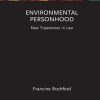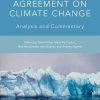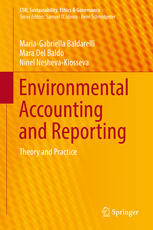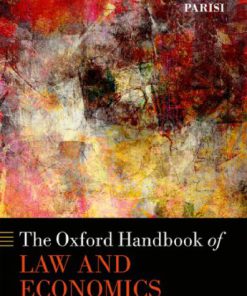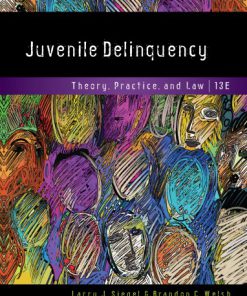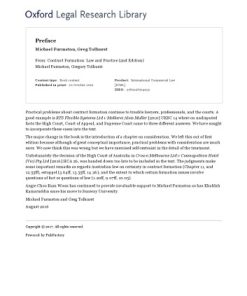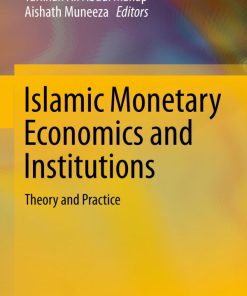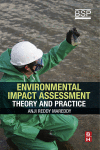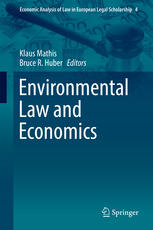Environmental Law and Economics Theory and Practice 1st Edition by Michael Faure 1108605045 9781108605045
$50.00 Original price was: $50.00.$25.00Current price is: $25.00.
Environmental Law and Economics Theory and Practice 1st Edition by Michael G. Faure – Ebook PDF Instant Download/DeliveryISBN: 1108605045, 9781108605045
Full download Environmental Law and Economics Theory and Practice 1st Edition after payment.
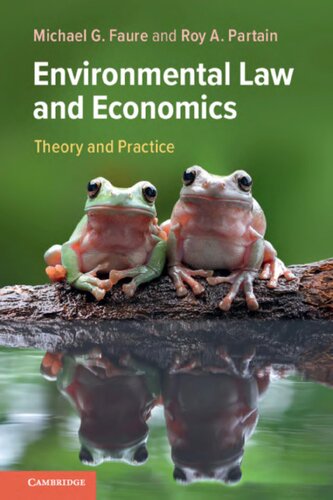
Product details:
ISBN-10 : 1108605045
ISBN-13 : 9781108605045
Author: Michael G. Faure
In Environmental Law and Economics, Michael G. Faure and Roy A. Partain provide a detailed overview of the law-and-economics methodology developed and employed by environmental lawyers and policymakers. The authors demonstrate how this approach can transcend political divisions in the context of international environmental law, environmental criminal law, and the property rights approach to environmental law. Private law solutions and public regulatory approaches are also explored, including traditional command-and-control and market-based forms of regulation. The book not only shows how the law-and-economics framework can be used to protect the environment, but also to examine deeper questions involving environmental federalism and the effectiveness of environmental law in developing economies. In clear, digestible prose that does not require readers to possess a background in microeconomics or mathematics, the authors introduce the theory and practice of environmental law and economics that have been so critical in the creation of robust environmental policy.
Environmental Law and Economics Theory and Practice 1st table of contents:
1 Introduction
1.1 Why a Book on Environmental Law and Economics?
1.2 Readership
1.3 Methodology
1.4 Synopsis and Structure
2 Environmental Harm and Efficiency
2.1 Principles of Environmental Law, from an Economic Perspective
2.2 Pollution as an Externality
2.2.1 External Effects for Firms and States
2.2.2 Internalising the Externality as Goal of Environmental Law
2.2.3 EIAs and Internalising Externalities
2.3 The Coase Theorem
2.3.1 Reciprocal Nature of Harm
2.3.2 Example of Conflicting Coasean Property Rights
2.3.3 The Coase Theorem: A Few Constraints
2.3.4 Practical Value of the Coase Theorem
2.3.5 Transboundary Application of the Coase Theorem
2.4 The Need for Legal and Policy Instruments
2.4.1 Determining Optimal Pollution Levels
2.4.2 Rules of Civil Liability
2.4.3 Public Regulation: Command and Control
2.4.4 Market-Based Instruments
2.4.5 Suasive Mechanisms
2.4.6 Voluntary and Private Mechanisms
2.4.7 Smart Instrument Mixes
2.5 Summary and Conclusion
3 Property Rights Approach to Environmental Law
3.1 Importance of Establishing Property Rights
3.1.1 The ‘Tragedy of the Commons’
3.1.2 Property Rights as a Remedy
3.2 Examples of Property Rights Approaches to Wildlife
3.2.1 Protection of Elephants
3.2.2 Effectiveness of CITES?
3.2.3 Protecting Rhinoceros via Property Rights
3.2.4 Localised Management
3.2.5 Conditions for Effective Management
3.3 First-Use Doctrine
3.3.1 Economic Principles
3.3.2 Examples
3.3.2.1 US Cases
3.3.2.2 European Examples
3.3.3 Economic Analysis
3.4 Summary and Conclusion
4 Environmental Standard Setting
4.1 Legal versus Economic Meaning of Standards
4.2 Types of Environmental Standards
4.2.1 Quality and Target Standards
4.2.2 Emission Standards
4.2.3 Technology or Production Standards
4.2.4 Optimal Standard-Setting and Cost-Benefit Analysis
4.2.5 Optimal Specificity
4.3 Cost-Benefit Analysis and Guidelines of Standard Setting
4.3.1 What Are These Guidelines?
4.3.1.1 BPM in the United Kingdom
4.3.1.2 ALARA in the Netherlands
4.3.1.3 BATNEEC in the IPPC Directive
4.4 Standard-Setting Guidelines and Economic Analysis
4.5 Summary and Conclusion
5 Principles of Environmental Law and Environmental Economics
5.1 Introduction
5.2 Sustainable Development
5.2.1 Sources
5.2.2 Legal and Economic Interpretation
5.2.3 Valuing Future Generations
5.3 Prevention at Source
5.3.1 Sources
5.3.2 Legal and Economic Interpretation
5.4 Proximity Principle
5.4.1 Free Trade versus Environmental Protection
5.4.2 Exceptions to Article 34: Trade-Restricting Measures
5.4.3 Trade of Waste between Efficiency and Ethics
5.5 Precautionary Principle
5.5.1 Sources and Contents
5.5.2 Economic Interpretation
5.5.3 The Use of the Precautionary Principle
5.6 Polluter Pays Principle
5.6.1 Sources
5.6.2 Economic Interpretation
5.7 Environmental Law and Human Rights
5.7.1 Environmental Rights in Constitutions
5.7.2 ECHR Case Law
5.7.3 Economic Interpretation
5.8 Integration
5.8.1 Integration of Laws: Codification
5.8.2 External Integration
5.8.3 IPPC
5.8.4 Economic Interpretation
5.9 Summary and Conclusion
6 Pricing Environmental Harm
6.1 Introduction
6.2 Importance of Cost-Benefit Analysis for Environmental Policy: General
6.2.1 Importance for Environmental Policy
6.2.2 Limits of Cost-Benefit Analysis
6.3 Cost-Benefit Analysis in Environmental Law and Policy
6.3.1 Cost-Benefit Analysis at the European Level
6.3.2 Economic Analysis of Soil Clean-Up
6.4 Economic Methods to Evaluate Environmental Damage
6.5 Summary and Conclusion
7 Market-Based Instruments
7.1 Introduction
7.2 Role of Environmental Information in the Markets
7.3 Regulation by Command and Control
7.4 Environmental Permit Trading
7.4.1 Basic Principles
7.4.2 Design Issues
7.4.3 The EU Emissions Trading Scheme
7.4.4 Efficacy of Emission Trading Systems
7.4.4.1 The ‘Living Legend’ of the US SO2 Trading Programme
7.4.4.2 Effectiveness of the EU Emissions Trading Scheme
7.5 Payments for Ecosystem Services (PES)
7.6 Environmental Taxation
7.6.1 Basic Principles and Advantages
7.6.2 Critical Issues
7.6.3 Some Success Stories
7.6.4 The Influence of Private Interest
7.7 Elasticities and Distributional Effects on Environmental Welfare
7.8 Summary and Conclusion
8 Liability Rules
8.1 Economic Principles of Accident Law: Introduction
8.1.1 The Goal of Tort Law
8.1.2 The Unilateral Case
8.1.2.1 Negligence
8.1.2.2 Strict Liability
8.1.2.3 Differences
8.1.3 The Bilateral Case
8.1.4 The Activity Level
8.2 Negligence versus Strict Liability to Control Environmental Harm
8.2.1 Economic Criteria
8.2.2 A Few Refinements
8.2.2.1 Information Differences
8.2.2.2 Insolvency: Strict Liability versus Negligence
8.2.2.3 Positive Externalities
8.2.3 Strict Liability in Environmental Law
8.2.3.1 International Level
8.2.3.2 Strict Environmental Liability in Statutes
8.2.3.3 Strict Environmental Liability in Case Law
8.3 Causation
8.3.1 Importance of Causation
8.3.2 Causal Uncertainty and ‘Probability of Causation’
8.3.3 Threshold Liability versus Causal Apportionment
8.4 Financial Caps
8.4.1 Economic Analysis of Caps
8.4.1.1 When Costs Are Not Fully Internalised
8.4.1.2 A Remedy to Uninsurability?
8.4.2 Legal Analysis of Caps
8.4.3 Contractual Limitations
8.5 Liability Channelling
8.5.1 Examples
8.5.2 Analysis
8.6 Joint and Several Liability
8.7 Latency and Retroactive Liability
8.7.1 Introduction
8.7.2 Statutes of Limitations
8.7.3 Examples
8.7.4 Time Lapse and Incentives to Prevent Accidents
8.8 Empirics
8.8.1 Deterrent Effect of CERCLA
8.8.2 Strict Liability versus Negligence
8.8.3 Increased Liability and Liability Avoidance
8.9 Summary and Conclusion
9 Environmental Regulation
9.1 Differences between Liability Rules and Regulation
9.2 Public Interest Criteria for Regulation
9.2.1 Information Asymmetry as a Criterion for Regulatory Intervention
9.2.2 Insolvency Risk
9.2.3 Missing Liability Litigation
9.2.4 Administrative Costs
9.3 The Need to Regulate Environmental Pollution
9.4 Safety Regulation in Practice
9.5 Private Interest Theory of Regulation
9.5.1 Lobbying for Barriers to Entry or Lenient Standards
9.5.2 Influence of Private Interest on Instrument Choice
9.5.3 The Choice for the Level of Government
9.5.4 Liability Law and Rent Seeking
9.5.5 Importance
9.6 Self-Regulation, Private Regulation, and Mechanism Design
9.7 Combination of Various Instruments
9.7.1 Optimality of Diverse Instrumentation
9.7.2 Liability and Regulation: Exclusivity?
9.7.3 Violation of Regulation and Liability
9.7.4 Compliance with Regulation and Liability
9.7.5 The Search for Smart Mixes of Instruments
9.7.6 Optimal Instrument Mixes in Practice
9.8 Summary and Conclusion
10 Environmental Crime
10.1 Introduction
10.2 Why Shift to Public Enforcement?
10.3 Administrative or Criminal Law?
10.4 How to Deter?
10.4.1 Raising Probabilities or Penalties?
10.4.2 Empirics
10.4.3 The Harrington Paradox
10.5 Optimal Sanctions
10.6 Corporate Environmental Crime
10.7 Enforcement Strategies
10.7.1 Deterrence or Cooperation?
10.7.2 Targeting and Risk-Based Enforcement
10.8 Summary and Conclusion
11 Insurance for Environmental Damage
11.1 Introduction
11.2 Insurance Theory Applied to Environmental Liability
11.2.1 The Utilitarian Approach
11.2.2 The Transaction Cost Approach
11.2.3 Applied to Environmental Insurance
11.3 Moral Hazard
11.3.1 Definition
11.3.2 Remedies
11.3.2.1 Monitoring
11.3.2.2 Exposing the Insured to Partial Risk
11.3.2.3 Combination
11.3.3 Moral Hazard in Environmental Insurance
11.3.3.1 Monitoring via Policy and Licence Conditions
11.3.3.2 Risk Differentiation
11.3.3.3 The Need for Specialisation
11.4 Adverse Selection
11.4.1 The Problem
11.4.2 The Cure
11.5 Capacity
11.6 Causal Uncertainty and Joint and Several Liability
11.6.1 Joint and Several Liability
11.6.2 Causal Uncertainty
11.7 Compulsory Financial Guarantees
11.8 Summary and Conclusion
12 Compensation for Environmental Damage
12.1 Introduction
12.2 Self-Insurance
12.2.1 Theory
12.2.2 Evaluation
12.3 Risk-Sharing Agreements
12.3.1 Theory
12.3.2 Case Study: Pools for Vessel-Induced Pollution (P&I Clubs)
12.3.3 Policy Analysis
12.4 Guarantees, Deposits, and Bonds
12.4.1 Theory
12.4.2 Deposits, Funds, and Bonds as Alternatives to Guarantees
12.4.3 Evaluation
12.5 Compensation Funds
12.5.1 Various Types of Funds
12.5.1.1 The Rise of Compensation Funds
12.5.1.2 Limitation Fund
12.5.1.3 Advancement Fund
12.5.1.4 Guarantee Fund
12.5.1.5 A General Environmental Fund
12.5.2 Case Study: The Gulf Coast Claims Facility (GCCF)
12.5.2.1 Historical Experience
12.5.2.2 Conditions for an Effective Rapid Claims Handling Mechanism
12.5.3 Funds versus Insurance
12.5.3.1 Risk Differentiation
12.5.3.2 Costs
12.5.4 A Compensation Fund for Environmental Damage?
12.5.4.1 Guarantee Fund
12.5.4.2 Restoration Fund
12.6 Summary and Conclusion
13 Environmental Federalism
13.1 Introduction
13.2 Starting Points
13.2.1 Tiebout’s Model of Federalism
13.2.2 Competing Legal Orders
13.2.3 Bottom-Up Federalism
13.3 Criteria for Centralisation
13.3.1 Transboundary Externalities
13.3.2 Race to the Bottom
13.3.3 Improving Trade
13.3.4 Reduction of Transaction Costs
13.3.5 Providing a Minimum Level of Protection
13.4 Consequences for Environmental Standard Setting
13.4.1 Introduction
13.4.2 Environmental Quality Standards
13.4.3 Emission Limit Values
13.4.4 Policy
13.5 Policy Perspective
13.6 Summary and Conclusion
14 The Role of Environmental Law in Developing Countries
14.1 Introduction
14.2 Environmental Kuznets Curve
14.2.1 Concept
14.2.2 Explanation
14.2.3 Policy Consequences
14.2.4 Importance
14.3 Pollution Havens and the Porter Hypothesis
14.3.1 Race to the Bottom or Top?
14.3.2 Porter Hypothesis: Weak and Strong Versions
14.3.3 Empirical Evidence of a Race to the Bottom
14.3.4 Empirical Evidence of Races to the Top
14.4 Optimal Environmental Regulation for Developing Countries
14.4.1 Lacking Administrative Capacity
14.4.2 Corruption
14.4.3 Environmental Federalism in Developing Countries
14.4.4 Indicators
14.5 Example: India
14.6 Summary and Conclusion
15 Epilogue
15.1 Our Motives
15.2 An Effective Methodology for Environmental Law Research
15.3 Legal Models and Policy Verification
15.4 Sustainable Development
15.5 An Evolving Methodology
15.6 An Evolving ‘Law of the Environment’
15.7 Evolution in Environmental Policies
15.8 Conclusion
People also search for Environmental Law and Economics Theory and Practice 1st:
environmental law & policy
environmental law and practice review
law and economics legal theory
environmental economics in theory and practice 2nd edition
environmental economics and management theory policy and applications
Tags: Environmental Law, Economics Theory, Practice, Michael Faure
You may also like…
Business & Economics - Management & Leadership
Politics & Philosophy
Business & Economics
The Oxford Handbook of Law and Economics: Volume 1: Methodology and Concepts Francesco Parisi
Education Studies & Teaching - Education - General & Miscellaneous
Juvenile Delinquency: Theory, Practice, and Law Larry J. Siegel
Commercial & Financial Law
Contract Formation: Law and Practice 2nd Edition Michael P. Furmston
Business & Economics
Science (General)
Insight on Environmental Genomics. High-throughput Sequencing 1st Edition Denis Faure
Business & Economics


